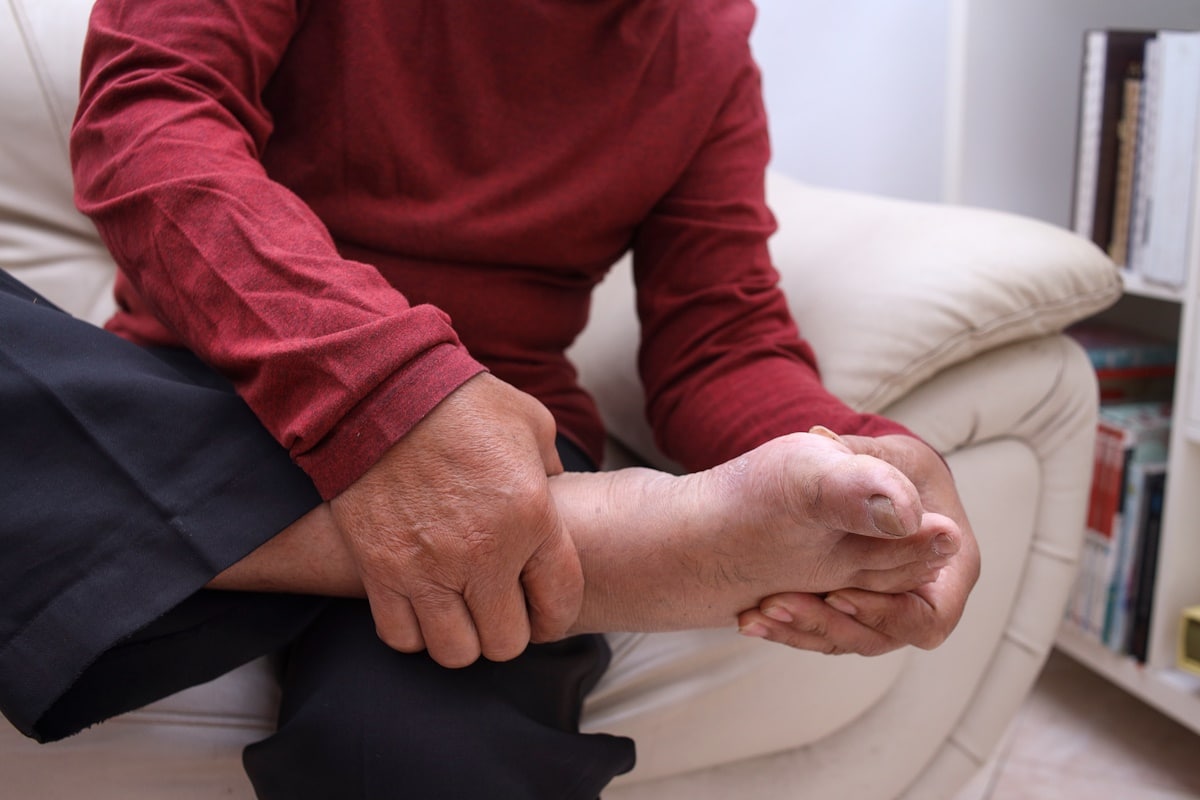A 2024 study in the journal Diagnostics found that younger men with gout have a higher risk of benign prostatic hyperplasia (BPH) than men without gout. Considered a common form of inflammatory arthritis, gout is already diagnosed in men at a higher rate (5.9%) than in women (2.0%) living in the United States.
This is not the first-time gout has been found to increase BPH in men. A 2022 study also found a correlation of men with gout having an increased risk of BPH due to hyperuricemia which is having high blood levels of uric acid.
The current study conducted by Korean researcher found that gout affects metabolism resulting in the deposit of uric crystals along with inflammation making men more vulnerable to the development of gout. What was also found was younger men with gout under the age of 60, had a high risk of BPH, but this was not as elevated in men older than 60.
What is benign prostatic hyperplasia?
BPH is a non-cancerous condition where the prostate gland enlarges, causing urinary problems. Situated below the bladder and in front of the rectum, the prostate is a gland about the size of a walnut. It wraps around a portion of the urethra, which carries urine and semen out of the body.
When the prostate becomes enlarged, it can impede the normal flow of urine and ejaculate through the urethra. This obstruction arises due to the increased pressure on the urethra caused by the enlarged prostate, leading to a variety of urinary symptoms.
It is important to note that while BPH itself is not cancerous, the symptoms associated with this condition can sometimes overlap with those of more serious conditions, such as prostate cancer. It is essential for individuals who are experiencing symptoms of BPH to seek medical attention. for a comprehensive evaluation and appropriate diagnosis. Early detection and management can help distinguish benign conditions from potentially more severe ones, allowing for timely and effective interventions.
What is gout?
Gout is a form of arthritis that causes extreme pain in one joint, often the big toe joint. Symptoms may get better or worse and are known as remission or flares. Multiple instances of gout can lead to gouty arthritis, which can worsen over time. Although gout has no cure, with the help of a healthcare provider, it can be managed effectively with medication and self-care.
Gout occurs due to hyperuricemia, which happens when excessive amounts of uric acid build up in the body. Uric acid is formed when purines, found in the body and food, break down. If there is too much uric acid in the body, it can lead to the buildup of crystals of uric acid within joints, fluids, and tissues in the body. It’s essential to note that hyperuricemia doesn’t always cause gout.
Takeaway from this study
The primary takeaway this study provides is that men younger than age 60 with gout, may be more prone to developing BPH. It is also vital that clinicians are knowledgeable on this topic and are considerate of the potential higher risk for BPH these men face.
What this means is that it’s up to clinicians to be educated on proper management of their male patients with gout and to immediately provide early monitoring for diagnosing BPH and if found, to provide early intervention for this condition.
Dr. David Samadi is the Director of Men’s Health and Urologic Oncology at St. Francis Hospital in Long Island. He’s a renowned and highly successful board certified Urologic Oncologist Expert and Robotic Surgeon in New York City, regarded as one of the leading prostate surgeons in the U.S., with a vast expertise in prostate cancer treatment and Robotic-Assisted Laparoscopic Prostatectomy. Dr. Samadi is a medical contributor to NewsMax TV and is also the author of The Ultimate MANual, Dr. Samadi’s Guide to Men’s Health and Wellness, available online both on Amazon and Barnes & Noble. Visit Dr. Samadi’s websites at robotic oncolo gy and prostate cancer 911.


